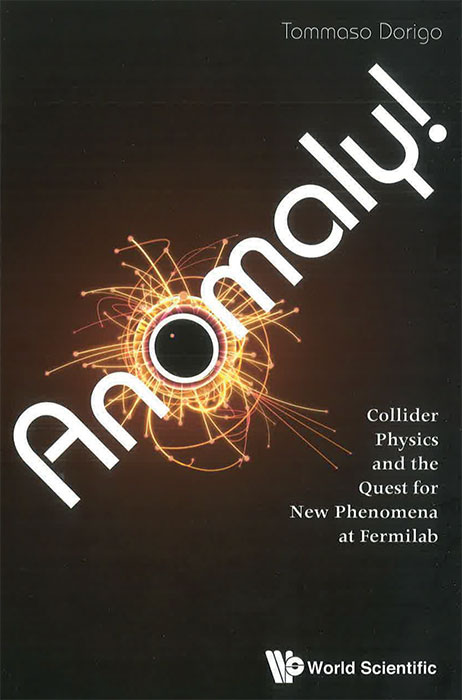
By Tommaso Dorigo
World Scientific
Also available at the CERN bookshop

Anomaly! is a captivating story of supposed discoveries that turned out not to be. The book provides an honest and not always flattering description of how large high-energy physics collaborations work, what makes experimental physicists excited, and of the occasional interference between scientific goals and personal factors such as ambition, career issues, personality clashes and fear of being scooped. Dorigo, who complements his recollections with many interviews and archival searches, proves to be a highly skilled communicator of science to the general public, as already known to the readers of his often controversial blog A Quantum Diaries Survivor. Thanks to well-chosen alternation of narration and explanation, several sections of the book read like a novel.
The main theme, as indicated by the title, is the anomalies (or outliers) that tantalised members of the CDF collaboration at Fermilab – and sometimes the external world – but ultimately turned out to be red herrings. The author uses these stories to show how cautious experimental particle physicists have to be when applying statistics in their data analysis. He also makes a point about the arbitrariness of the conventional 3σ and 5σ thresholds for claiming “evidence” and “discovery” of a new phenomenon.
Slightly off topic, given the title of the book, three chapters are devoted to the ultimately successful search for the top quark, the first evidence of which was very far from being an “anomaly”: its existence was expected in the mainstream and the “global fits” of other collider data were already pointing at the right mass range. Here Dorigo is interested in the opposite lesson: the conventional thresholds on p-values, originally motivated by the principle “extraordinary claims demand extraordinary proofs”, are hard to justify when a discovery is actually a confirmation of the dominant paradigm. (The author explicitly comments on the similarity with the Higgs boson discovery two decades later.) The saga of the top-quark hunt, which contains many funny and even heroic moments, is also an occasion for the author to elaborate on what he describes as over-conservative attitudes dominating in large teams when stakes are high.
In general, the book’s topics have clearly been chosen more by the importance of the lesson they teach than by their ultimate impact on science. Almost an entire chapter is devoted to a measurement of the Z boson mass at Fermilab, which was already known in advance to be doomed to obsolescence very soon, as the experiments at the upcoming LEP accelerator were more suited to that kind of measurement. Still, the chapter turns out to be an enthralling story, ending with a mysterious attempt by an unsporting competitor from another US laboratory to sabotage the first CDF report of this measurement at an international conference. In some other cases, the choice of topics is driven by their entertainment value, as in the case of the episode of the “Sacred Sword”, a radioactive-contamination incident that luckily ended well for its protagonists.
The author’s role in the book is at the same time that of an insider and of a neutral observer, attending crucial meetings and observing events unfold as a collaboration member among many others, with the remarkable exception of the final story where he plays the role of internal reviewer of one of the eponymous anomalies. In spirit and form, Anomaly! reminds me of Gary Taubes’ celebrated Nobel Dreams, but with more humour and explicit subjectivity. Although far from being scholarly, Anomaly! may also appeal to readers interested in the sociology of science or in the epistemological problem of how a scientific community finally settles on a single consensus, in the vein of Andrew Pickering’s Constructing Quarks, Peter Galison’s How Experiments End and Kent Staley’s The Evidence for the Top Quark: Objectivity and Bias in Collaborative Experimentation. The latter, in particular, is interesting to compare with the chapters of Anomaly! that narrate the same story.








